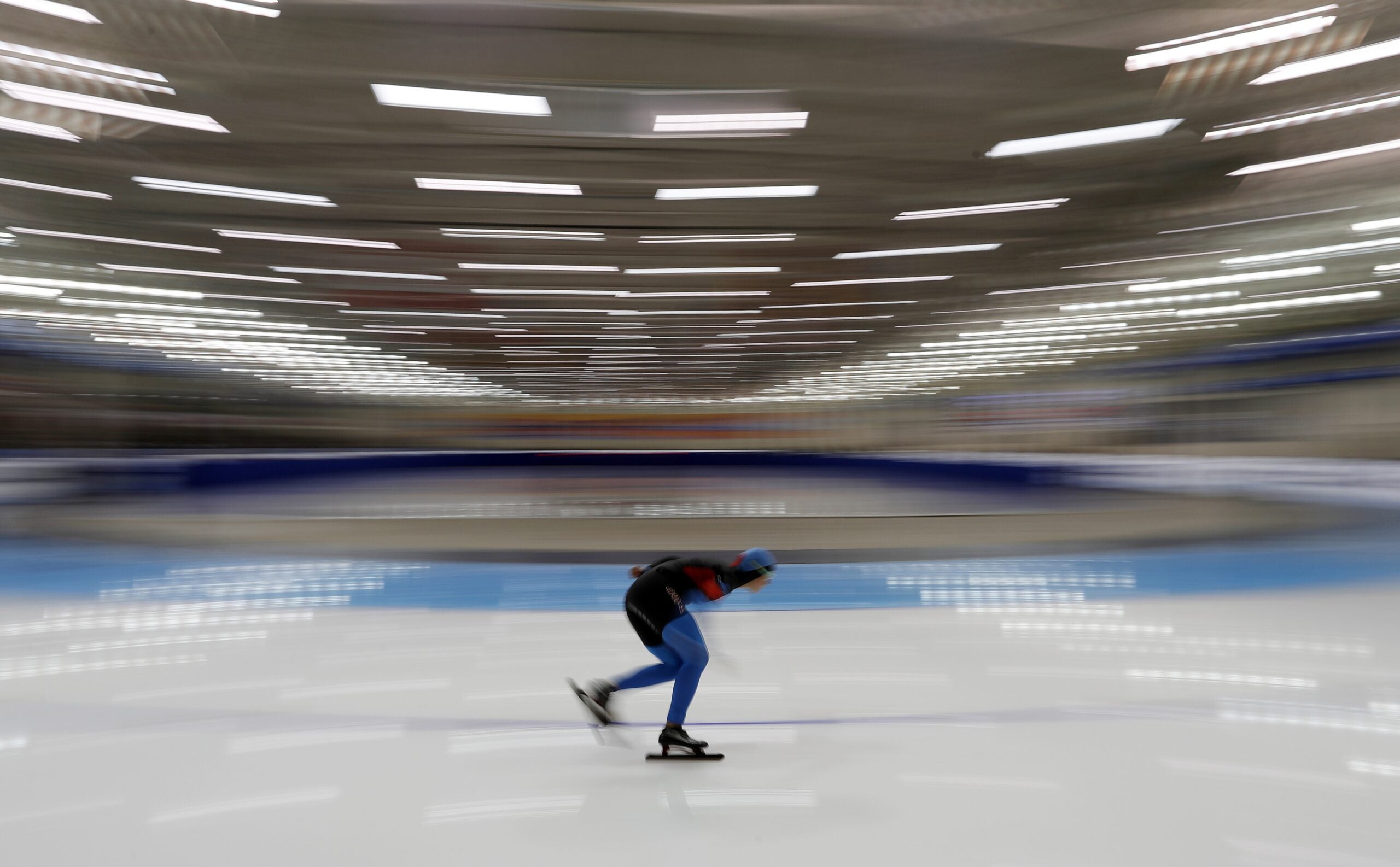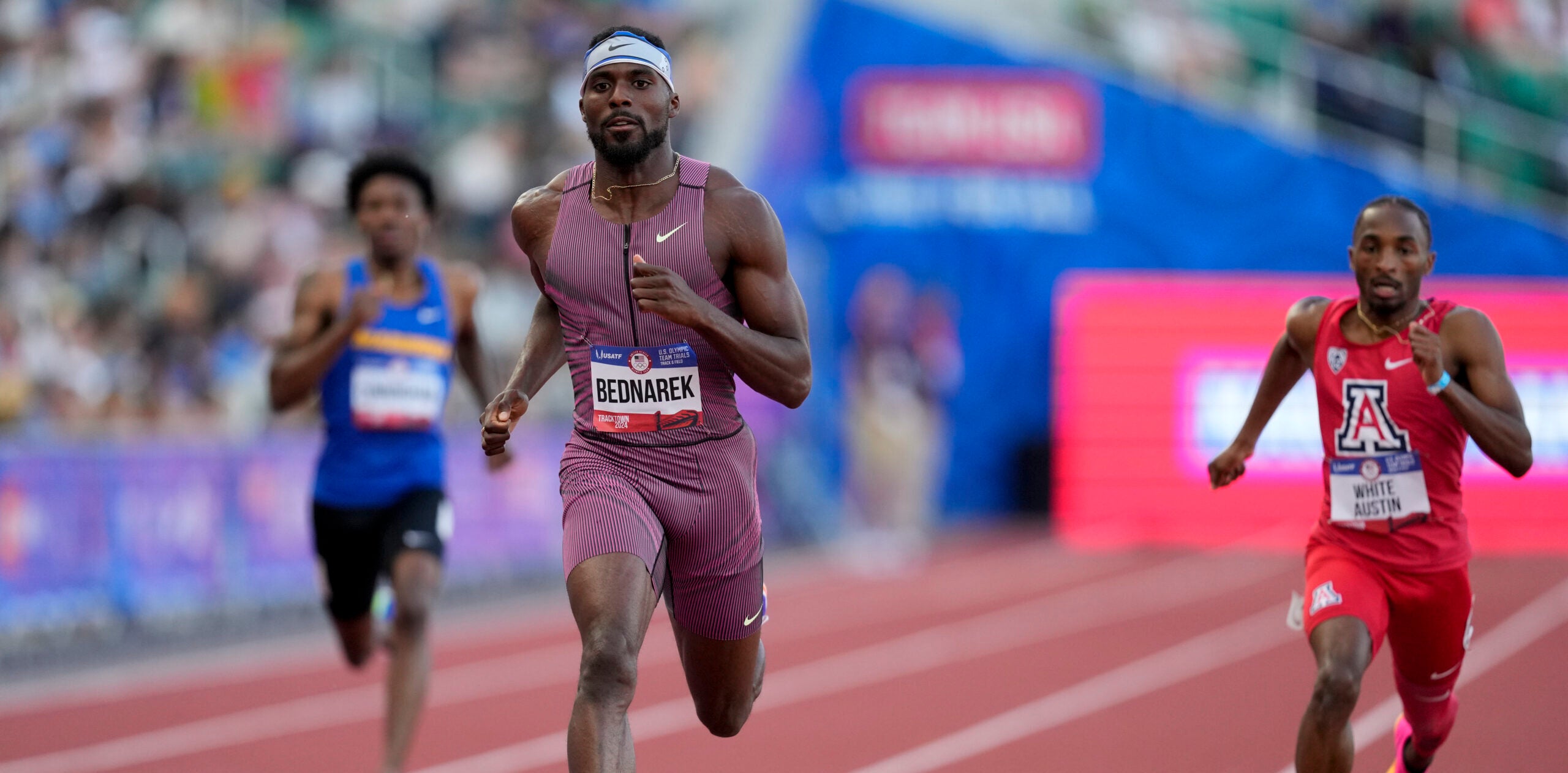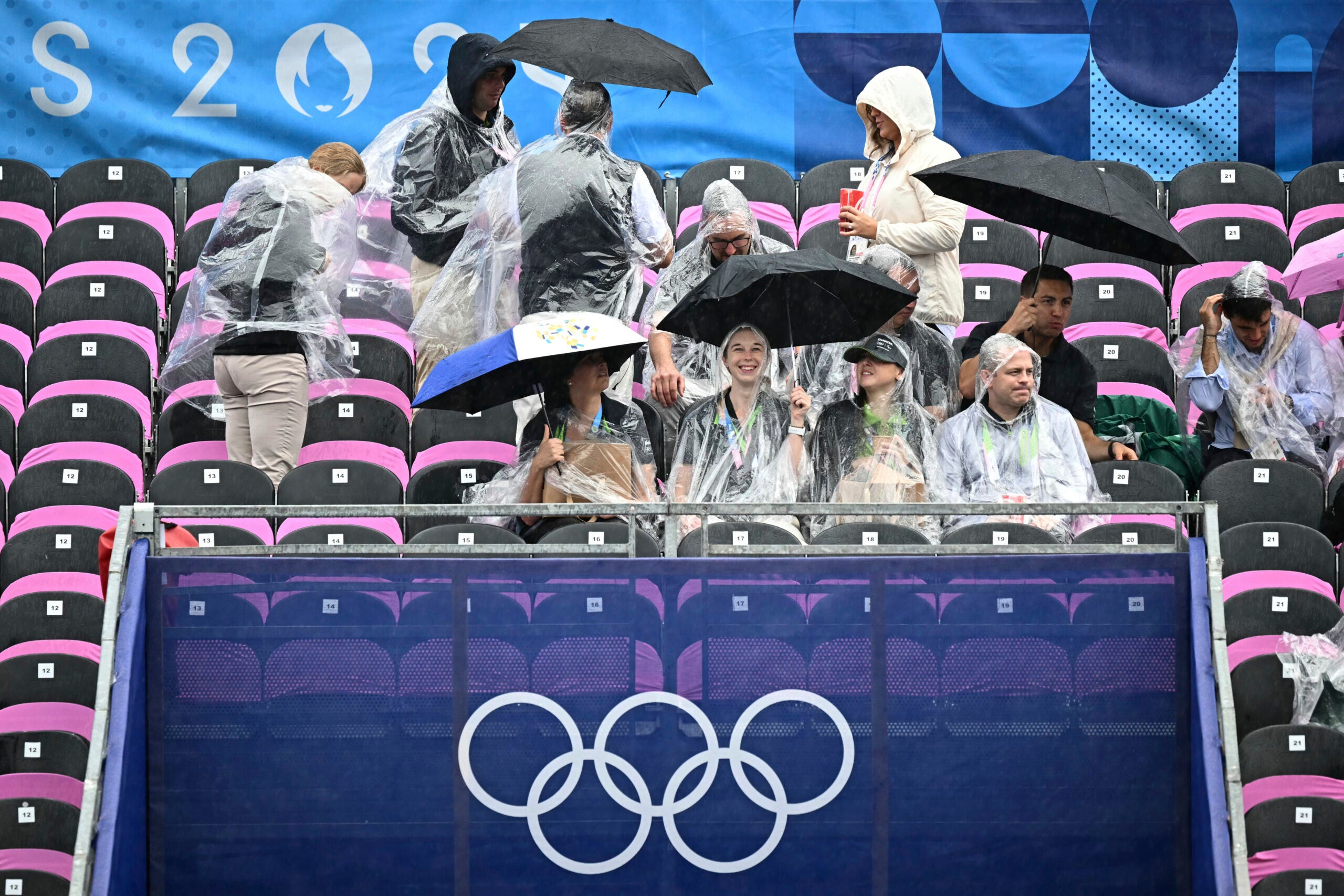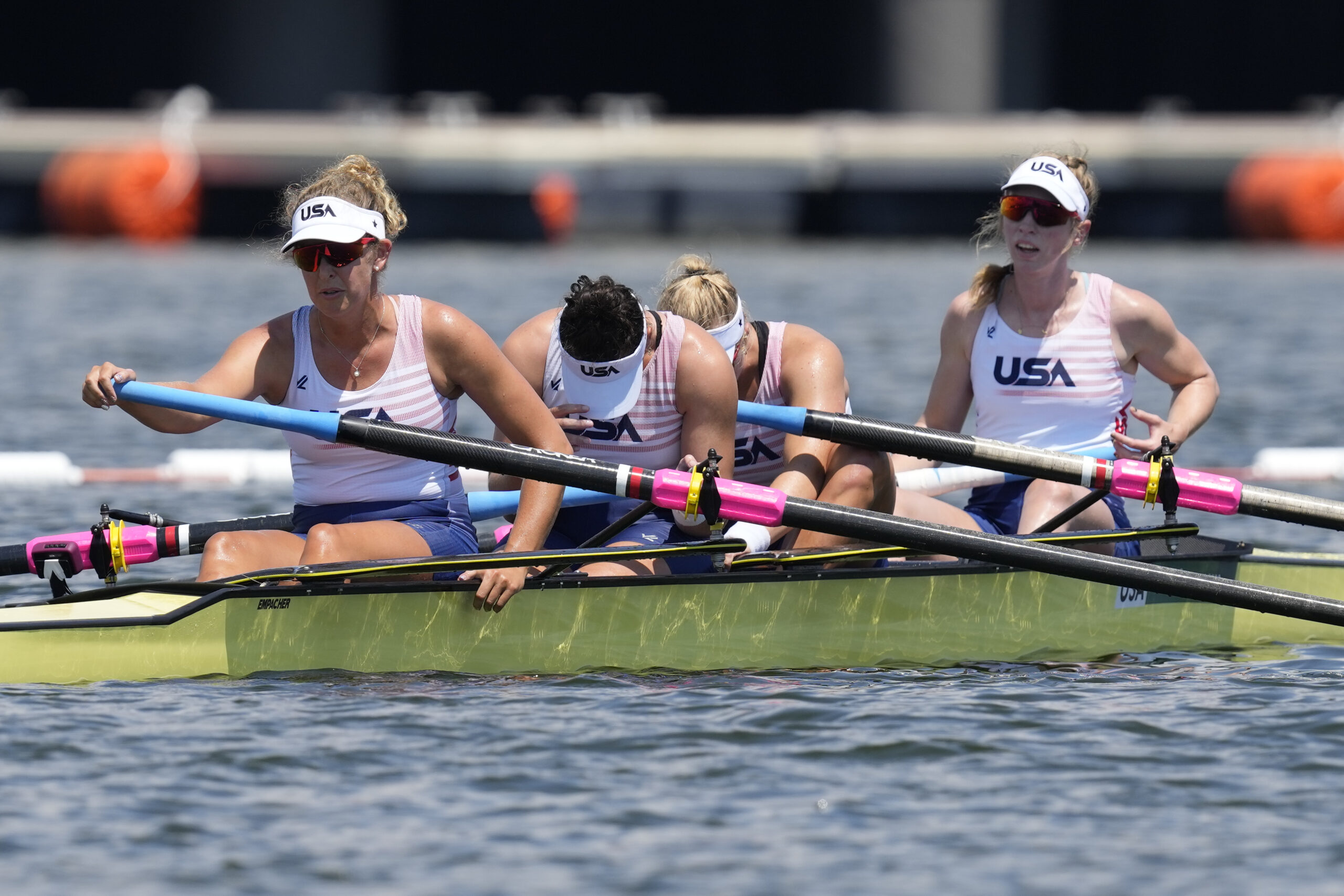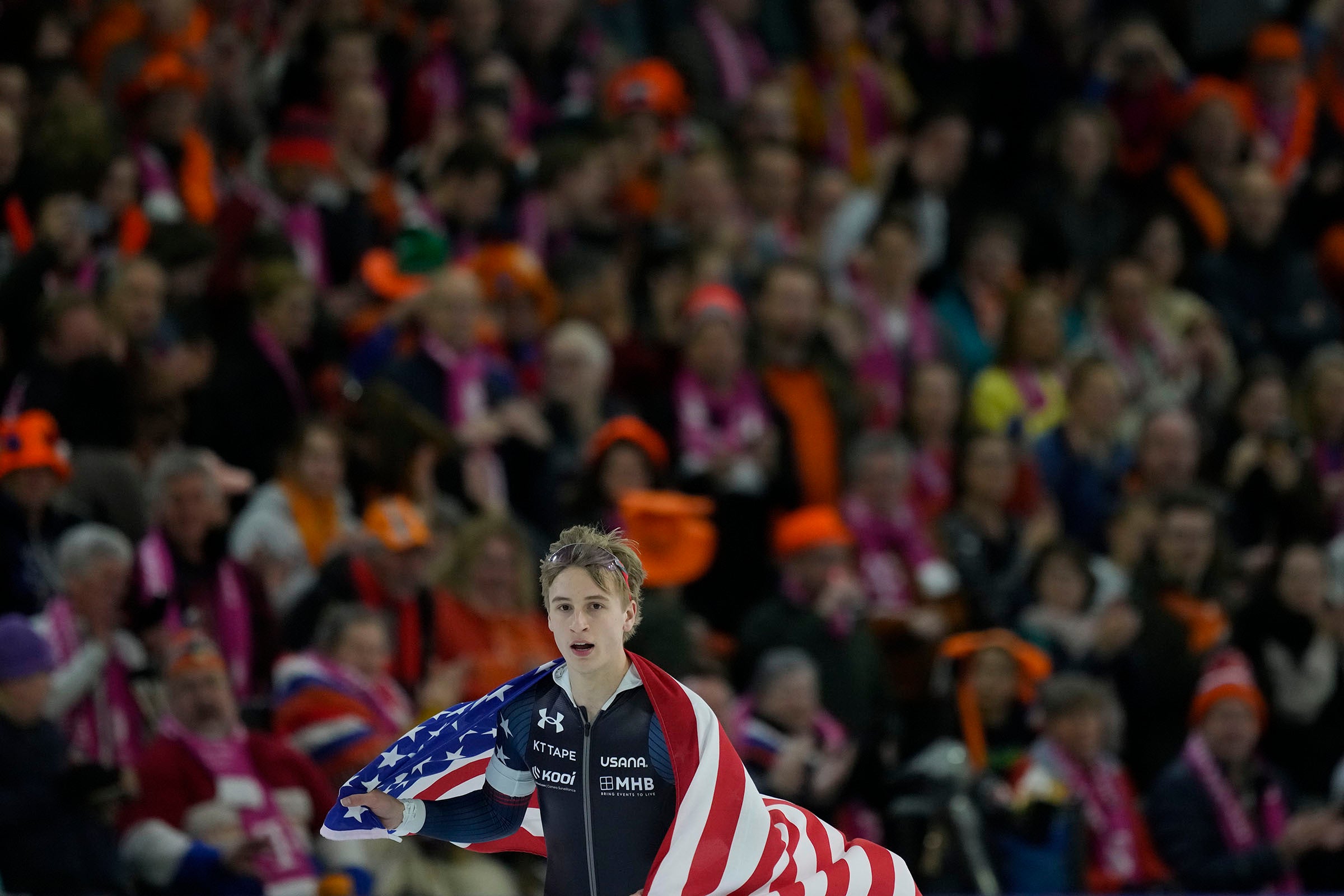United States long-track speedskaters will continue to try to make the Olympic team at qualifying trials in Milwaukee through Sunday evening.
The competition on the 400-meter oval at the Pettit National Ice Center comes amid concerns: the U.S. lack of international success in the sport and whether there’s still much public interest in speedskating in America.
But there’s no doubt that the top speedskaters are still deeply into the sport.
News with a little more humanity
WPR’s “Wisconsin Today” newsletter keeps you connected to the state you love without feeling overwhelmed. No paywall. No agenda. No corporate filter.
The men’s winner in the 1,000-meter competition this week, 2014 Olympian Joey Mantia, was very relieved after Wednesday’s race.

First place finisher Joey Mantia, center, celebrates with second place finisher Shani Davis, left, and third place finisher Mitchell Whitmore, right, during the 1,000 meters medal ceremony. John Locher/AP Photo
“Absolutely. I’m going to sleep well tonight. Last night, I was up at 3 o’clock, 4 o’clock, 5 o’clock, tossing and turning. Just a high-stress situation,” Mantia told reporters.
The second place finisher in the men’s 1,000-meter race — four-time Olympian, and two-time Gold medal winner Shani Davis — said he’s pleased to qualify for next month’s Winter Games in South Korea.
Davis, relatively old for speedskating at age 35, said he’s not ready to leave the limelight.
“I went out there and I fought like it was my last race of my career, and was able to make the spot on the team. I’m very happy about that,” Davis said after the race Wednesday.
The women’s 1,000-meter winner and two-time Olympian, Heather Bergsma, also said she is happy to be going to another Winter Games.

First place finisher Heather Bergsma, center, poses for photos with second place finisher Brittany Bowe, left, and third place finisher Mia Manganello, right, during a medal ceremony following the women’s 1,000 meter. John Locher/AP Photo
“Yeah, now I can breathe a little bit more, and can relax and have fun this week,” she said after her race Wednesday.
Women’s 1,000-meter runner-up Brittany Bowe has overcome a recent case of walking pneumonia to make the Olympics a second time.
“You know, I dream about it every night. Working hard every day, doing the best I can every single day, and that’s all I can ask for,” Bowe said after the race, adding that no Olympic contender has an “easy ride” and all of them have personal challenges to overcome.
As more than 1,300 people began to fill the bleachers Wednesday afternoon at Pettit, one of them, Sherry Olson, talked about some of the challenges of getting into speedskating and being able to stay involved.
Olson’s daughter Brianna Bocox, from Wyoming, had three speedskating events scheduled for the week, and Olson said it’s taken many years of sacrifice to get here.
“Getting up early, it’s a lot of time missed from home on holidays; traveling on holidays so you can get to events to acclimate to the climate, the culture, the food, the time change. It’s sacrifices by not only the athletes, but their family members as well,” Olson said. The upside? Seeing her daughter do what she loves.
Speedskating officials say the popularity of the sport has peaks and valleys, but worry that in some nations —including the U.S. — the popularity of the sport has waned
Still, the amount of time and increasing financial commitment are often thought to be two of the reasons more young people aren’t trying to compete in long-track speed skating.
For Olympic hopeful Nathan Miller, there’s also the challenge of mixing in academics. The kinesiology student at the University of Wisconsin-Milwaukee says balancing everything can be really hard.
“You have to really compartmentalize what you do here at the Pettit, and when you go home and study, so you can sort of separate the two worlds and get everything that you need to get done accomplished, ” Miller said.
Jim Chapin sees another problem for speedskating. Too many youngsters are focused on their phones and computers, said Chapin, a longtime youth skating coach and former Olympic Trials competitor who came to Milwaukee this week from St. Louis.
“Some of this younger generation from America has the strongest thumbs in the world from video games. And strong thumbs don’t get you on Olympic teams. Strong legs get you on Olympic teams.”
Still, Chapin is hopeful. He tries to make sure his club’s skaters have fun and as much success as possible.
Chapin said more success by the U.S. speedskating teams at this year’s Olympics would boost interest in the sport, much the way wins by Wisconsin skaters like Eric Heiden, Dan Jansen and Bonnie Blair seemed to help decades ago.
U.S. teams won no long-track medals at the 2014 Winter Games in Sochi, Russia, as skaters from the Netherlands dominated. But, 1,000-meter Trials winner Joey Mantia said his teammates have the right mindset heading for next month’s Games.
“This is a chance at redemption for us. Obviously, Sochi was a disaster. I think we fixed every problem we had in Sochi, and now at this point it’s up to us. We have all the tools we need,” Mantia said.
And, the chance, perhaps, to reignite U.S. interest in long-track speedskating.
The Olympic Games are Feb. 9-25.
Wisconsin Public Radio, © Copyright 2025, Board of Regents of the University of Wisconsin System and Wisconsin Educational Communications Board.

